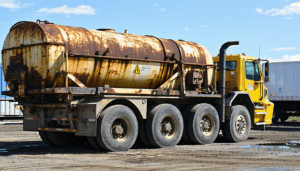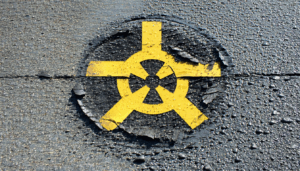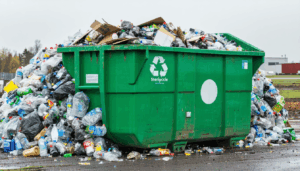In the United States, the growing concern over the disposal of pharmaceutical waste has taken center stage as environmental and public health risks mount. Improper handling of expired or unused medications poses threats to water systems, wildlife, and communities. This article delves into the latest developments, regulatory updates, and innovative solutions addressing this critical issue. From new guidelines by federal agencies to community-driven initiatives, we explore how stakeholders are tackling the challenge and what it means for the future of public safety and environmental protection.
The Rising Challenge of Pharmaceutical Waste
Pharmaceutical waste, including expired prescriptions, over-the-counter drugs, and unused medications, has become a pressing issue in the US. According to the Environmental Protection Agency (EPA), millions of pounds of pharmaceuticals are discarded annually, often ending up in landfills or flushed into water systems. This improper disposal contaminates drinking water and harms aquatic ecosystems, with traces of drugs detected in rivers and lakes across the country.
The scale of the problem is staggering. A 2022 study by the US Geological Survey found that over 60% of tested water sources contained measurable levels of pharmaceutical compounds. This not only endangers wildlife but also raises concerns about long-term human health impacts.
Regulatory Updates on Disposal of Pharmaceutical Waste
Recent federal and state actions aim to curb the risks associated with pharmaceutical waste. In 2023, the Drug Enforcement Administration (DEA) expanded its National Prescription Drug Take Back Day, collecting over 600,000 pounds of unused medications in a single event held on October 28. This biannual initiative encourages Americans to safely dispose of drugs at designated drop-off locations, reducing the risk of misuse and environmental harm.
Additionally, the EPA has tightened guidelines for healthcare facilities and pharmacies under the Resource Conservation and Recovery Act (RCRA). These rules mandate proper waste segregation and disposal methods to prevent hazardous pharmaceuticals from entering the environment. “Safe disposal practices are essential to protect our communities and ecosystems,” said Dr. Emily Carter, an environmental scientist at the EPA.
Impact on Stakeholders and Communities
The burden of managing pharmaceutical waste falls on multiple stakeholders, including healthcare providers, pharmacies, and local governments. Hospitals and clinics face increased costs to comply with disposal regulations, while pharmacies are tasked with educating consumers on safe practices. For communities, especially in rural areas, access to disposal sites remains limited, often leading to improper discarding.
On a positive note, community programs are stepping up. Over 5,000 permanent drug take-back locations now operate nationwide, supported by partnerships between law enforcement and retail chains like CVS and Walgreens. These efforts aim to make safe disposal more accessible while raising awareness about the dangers of flushing or trashing medications.
Innovative Solutions and Future Outlook
Beyond regulations and take-back programs, technology offers promising solutions. Companies are developing mail-back envelopes for unused drugs, allowing individuals to send medications to certified disposal facilities. Meanwhile, some states are piloting drug deactivation systems—pouches or kits that render pills harmless before they’re thrown away.
Looking ahead, experts predict stricter policies and greater investment in waste management infrastructure. “We need a multi-pronged approach combining education, innovation, and enforcement,” noted Dr. Michael Reed, a public health researcher at Johns Hopkins University. The potential for extended producer responsibility laws, where manufacturers fund disposal programs, is also gaining traction as a way to share accountability.
Conclusion: A Call for Collective Action
The disposal of pharmaceutical waste in the United States is a complex issue demanding urgent attention. From contaminated water sources to regulatory advancements, the stakes are high for both the environment and public health. While initiatives like National Prescription Drug Take Back Day and community drop-off points mark significant progress, gaps in accessibility and awareness persist. As technology evolves and policies tighten, collaboration among government, industry, and citizens will be key to ensuring safe, sustainable solutions for managing pharmaceutical waste.
Frequently Asked Questions (FAQ)
-
What is pharmaceutical waste?
Pharmaceutical waste includes expired, unused, or unwanted medications, such as prescription drugs, over-the-counter pills, and medical supplies that require proper disposal to avoid environmental or health risks. -
How can I safely dispose of medications in the US?
Use designated drug take-back programs, such as those offered by the DEA or local pharmacies. Many communities have permanent drop-off sites at police stations or retail stores like CVS. Avoid flushing drugs or throwing them in the trash unless no other options are available. -
Why is improper disposal of pharmaceutical waste harmful?
Discarding medications in sinks or trash can contaminate water supplies and soil, harming wildlife and potentially affecting human health through exposure to trace compounds in drinking water. -
Are there penalties for improper disposal?
Yes, under federal laws like the RCRA, businesses such as hospitals can face fines for non-compliance with hazardous waste disposal rules. Individuals may also face local penalties depending on state regulations.




